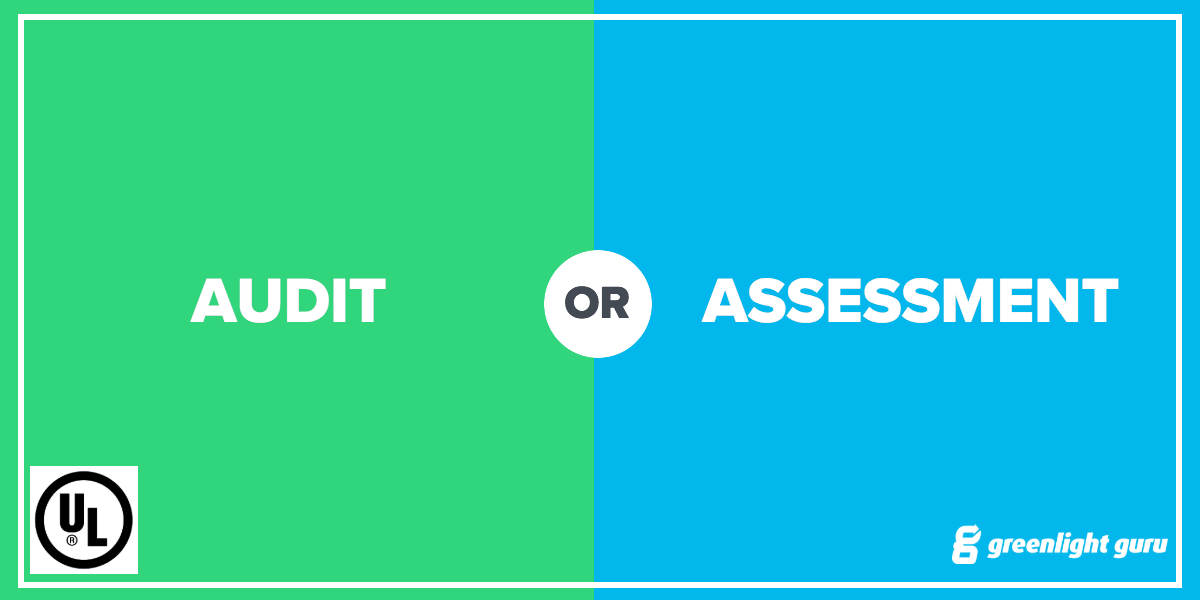Quality Management Audit or Assessment? The Differences Explained

What's the difference between the two? Plenty!
What's a quality management audit?
A typical quality management audit only provides a sample understanding of the compliance issues within your Quality Management System.
What's a quality management assessment?
However, a holistic quality management assessment will provide you with a thorough understanding of the quality of the performance of the entire Quality Management System. A thorough assessment is inclusive of:
- Audit of Compliance for remaining QS systems
- Appraisal of the Management Control System
- Analysis of Product & Process Data:
- Benefit-risk, capability & stability of P&PC
- Compliance, effectiveness and efficiency of QMS
It is clear the FDA believes that company officials are directly responsible for compliance as per the Regulatory Procedures Manual, 4-1-1 - Warning Letter Procedures: Responsible officials in positions of authority in regulated firms have a legal duty to implement whatever measures are necessary to ensure that their products, practices, processes, or other activities comply with the law. Under the law such individuals are presumed to be fully aware of their responsibilities.
Without a doubt, it is difficult for organizations to ensure their capability to consistently identify the totality of their quality compliance issues through an auditing plan, regardless of how aggressive that plan may be.
Why is that? Human nature.
While many life sciences companies clearly audit themselves to verify the compliance of their Quality Management System (QMS), there commonly exists a blind spot when it comes to accepting the results found within their own internal environment.
This is born from expectations and professional organizational relationships, causing everything to be seen primarily from the lens of the company culture. Bad news is never welcome. When issues are raised, they may be considered as an outlier and not considered as indicative that there could be something significantly wrong with the system.
People within these organizations develop such blind spots that are resultant from obsolete paradigms and incomplete or incorrect assumptions in their understanding of constantly changing environment, causing an inaccurate assessment of a situation.
Even organizations with the most talented and best prepared leaders face complex, ever-changing, and often unpredictable challenges resultant from obsolete cultural paradigms and incomplete or incorrect assumptions about the significance of the quality issues identified.
If a quality issue is identified, it is an issue that must be investigated more thoroughly. The leadership within the company must identify and overcome the company’s blind spots to facilitate moving the company forward successfully.
One of the most effective ways of avoiding these blind spots is simply to be willing to unconditionally accept quality issues once they are identified, and to further investigate the significance of the issue to resolution. This would be inclusive of holistically assessing the Quality Management System beyond the scope of the quality issue identified.
For example, let’s look (below) at the instructions provided by the Food and Drug Administration when they observe violations of the quality system requirements in either a Form 483 or a Warning Letter.
FDA 483 Instruction: “The observations noted in this Form FDA-483 are not an exhaustive listing of objectionable conditions. Under the law, your firm is responsible for conducting internal self-audits to identify and correct and all violations of the quality system requirements.”
FDA Warning Letter Instruction: “You should know that this letter is not intended to be an all-inclusive list of the violations at your firm’s facility. It is your firm’s responsibility to ensure compliance with applicable laws and regulations administered by FDA. The specific violations noted in this letter and in the FDA 483 issued at the close of the inspection may be symptomatic of serious problems in your firm’s manufacturing and quality management systems. Your firm should investigate and determine the causes of the violations, and take prompt actions to correct the violations and bring the products into compliance.”
Very clear instruction. Yet, one of the biggest mistake leaders continue to make is to believe the only thing that is wrong with their Quality Management System is what the FDA pointed out to them as the outcome of their last audit, and specific to the examples of non-compliance provided by the Investigator.
This is a significant blind spot! The truth is that upon issuance of a Form 483 or a Warning Letter, the reality of the situation has changed. The FDA now expects a holistic approach to address the quality of the entire QMS.
What is the best course of action? Responsible leadership will want to ensure the performance of their Quality Management System to be compliant to regulatory requirements; effective in achieving operational results, and; efficient in operational execution.
This begins with a comprehensive performance assessment of your Quality Management System to obtain the information and awareness necessary to properly enable the construction of a prioritized and focused plan that will facilitate:
- the transition from non-compliance to compliance;
- the management of the transformation from compliance to performance, and;
- the transition to daily operations that function within a state of ongoing continual improvement.
For additional information regarding an assessment of your Quality Management System, and to set your organization on a path to obtain compliant, effective and efficient results, e-mail me at Larry.Mager@UL.com or call +1-844-349-2272 to discuss this topic.
Larry Mager is a Senior Advisor to the UL EHS Sustainability Advisory Services team, supporting UL clients within the Life Sciences Industry to elevate their operational performance through innovative QMS advisory solutions. With over three decades of experience within the Life Sciences industry, Larry is an...








